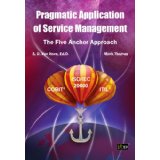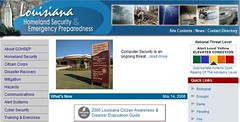Enhanced IT Service Management though integrated management frameworks
Learn how to integrate COBIT®, ITIL® and ISO/IEC 20000 for better IT Service Management
With the increasing popularity of ITIL® as a framework for IT Service Management (ITSM), a number of organizations have realized that this approach is sometimes not enough on its own. As a result, service managers are looking for ways to enhance their ITIL-based ITSM without having to throw it away and start again. Many are already working towards compliance with ISO/IEC 20000 — the International Standard for IT Service Management. With the recent release of COBIT®5, service management practitioners have even more options. However, until now, there has been little guidance on how to merge these frameworks, standards and methodologies to develop best practice across the ITSM function and produce a robust enterprise philosophy for service delivery.
Guidance on creating an integrated system
Written by service management gurus Suzanne D. Van Hove and Mark Thomas, Pragmatic Application of Service Management is the first book to provide guidance on creating an integrated system based on the three leading service management approaches: COBIT®5, ISO/IEC 20000 and ITIL and, to provide a unique mapping to assist service management practitioners in their information gathering. This practical book presents a holistic view of the three and enables service managers to immediately adapt and deploy the guidance, quickly improving their ITSM function.
Create a stronger, more robust Service Management System
Packed with instructive illustrations and helpful tables, this book is ideal for service managers, consultants, auditors and anyone who is considering adopting, adapting or merging COBIT®5, ISO/IEC 20000 and ITIL. Through mini case studies, the authors apply their unique Five Anchor Approach to demonstrate how the improvement aspects of COBIT®5, ISO/IEC 20000 and ITIL can help identify and deal with common problems faced by today’s organizations. Read this book to learn how to merge COBIT®5, ISO/IEC 20000 and ITIL for better service management
About the Authors
Dr Suzanne D. Van Hove is the founder and CEO of SED-IT. A prior Board member of itSMF USA and recipient of the Industry Knowledge Award as well as Lifetime Achievement, she is an advocate for professionalism within Service Management.
Mark Thomas is the founder and President of Escoute, LLC, an IT Governance consultant as well as the previous President of the itSMF USA Kansas City LIG and COBIT® SIG. As a well- known ITIL and COBIT® expert with over 20 years of professional experience, Mark’s background spans leadership roles from datacenter CIO to Management and IT Consulting. Mark has led large teams in outsourced IT arrangements, conducted PMO, Service Management and governance activities for major project teams and managed enterprise applications implementations across multiple industries.
Download and read ITGP’s latest publications:
Pragmatic Application of Service Management
To know more on related Pragmatic Security Metrics
Pragmatic Security Metrics
Download ITIL – ITSM Toolkit
Related articles












